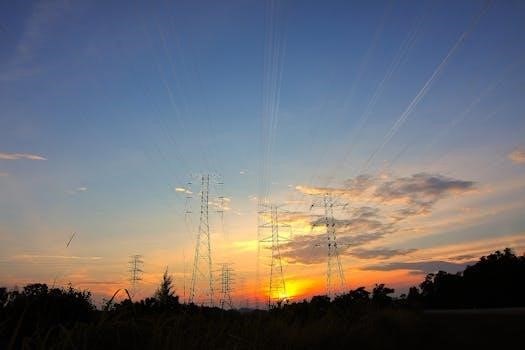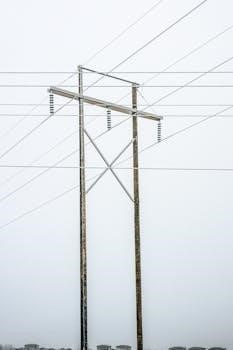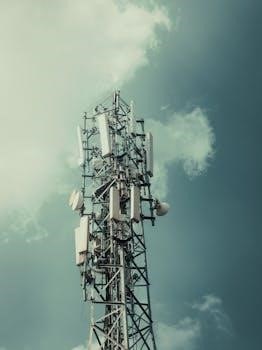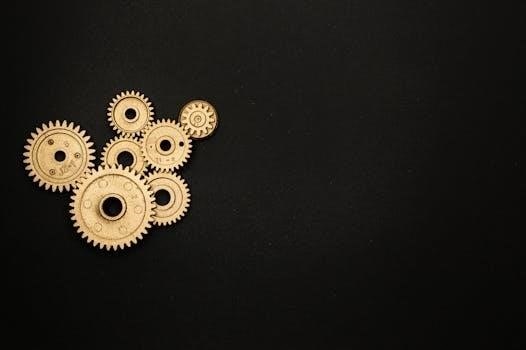Automatic to Manual Transmission Conversion Kit⁚ A Comprehensive Guide
Considering swapping your automatic transmission for a manual? This guide provides a comprehensive overview of automatic to manual transmission conversion kits. We’ll explore the benefits‚ components‚ factors‚ and process involved. Learn if it’s right for you!
The allure of a manual transmission‚ with its enhanced driver engagement and control‚ often tempts automotive enthusiasts to consider converting their automatic vehicles. This conversion involves replacing the existing automatic gearbox with a manual transmission‚ along with the necessary supporting components. While it’s a significant undertaking‚ the potential rewards‚ such as improved performance and a more connected driving experience‚ can be considerable.
This guide aims to demystify the process‚ offering a clear understanding of what’s involved in an automatic to manual transmission conversion. We’ll delve into the reasons behind such conversions‚ the key components of a conversion kit‚ and the critical factors to assess before embarking on this project. By carefully considering the pros and cons‚ you can determine if converting to a manual transmission aligns with your automotive goals and capabilities. Modern Driveline specializes in conversion kits!
Benefits of Converting to a Manual Transmission
Converting from an automatic to a manual transmission offers several potential advantages that appeal to driving enthusiasts. One of the primary benefits is enhanced driver engagement. Manual transmissions provide a more direct connection to the vehicle‚ allowing drivers to feel more involved in the driving experience through gear selection and clutch control.
Performance improvements can also be realized with a manual transmission. Drivers have greater control over the engine’s power band‚ enabling quicker acceleration and more precise gear changes. Furthermore‚ some enthusiasts prefer the simplicity and reliability of a manual transmission over the more complex automatic systems. Converting can lead to a more rewarding and engaging driving experience‚ allowing for greater control and connection. Some even claim increased fuel efficiency‚ though this often depends on driving habits.

Understanding Conversion Kits
Delving into automatic to manual transmission conversion kits reveals the essential components required for a successful swap. Knowing what’s included and available options ensures a well-planned and executed conversion.
Components of a Typical Conversion Kit
A typical automatic to manual transmission conversion kit is a comprehensive package designed to provide nearly everything needed for the swap. At its heart lies a rebuilt or new 5-speed or 6-speed manual transmission‚ the core component enabling the shift. To link the engine to the transmission‚ a clutch kit is included‚ typically with a disc‚ pressure plate‚ release bearing‚ pilot bushing‚ and alignment tool for proper installation. A lightened and resurfaced flywheel ensures smooth power transfer.
The kit also contains the components that actuate the clutch. These typically include the clutch master cylinder‚ clutch slave cylinder and the necessary bolts‚ along with clutch lines and hoses for hydraulic connection. Completing the kit are often the smaller‚ yet essential parts‚ such as the hardware to secure everything in place.
Essential Parts Included
When undertaking an automatic to manual transmission conversion‚ certain parts are absolutely essential for a successful swap. The manual transmission itself is obviously the primary component‚ often a rebuilt unit to balance cost and reliability. The clutch assembly is also crucial‚ including the disc‚ pressure plate‚ and release bearing‚ ensuring proper engagement and disengagement. A flywheel‚ lightened or resurfaced‚ provides the necessary inertia for smooth operation.

Furthermore‚ the hydraulic components responsible for clutch actuation are indispensable⁚ the master cylinder‚ slave cylinder‚ and connecting lines/hoses. The kit includes any bolts‚ and hardware needed to secure all parts. Without these essential parts‚ the conversion cannot be completed‚ which highlights the importance of a comprehensive conversion kit.
Available Kits and Manufacturers
The market offers a variety of automatic to manual transmission conversion kits‚ catering to different vehicle makes and models; Several manufacturers specialize in providing comprehensive kits that include nearly everything needed for a successful swap. These kits vary in terms of included components and the specific transmission used. Some kits are designed for stock manual transmission swaps‚ offering a straightforward and reliable solution.
Other kits focus on performance upgrades‚ featuring transmissions with enhanced capabilities and durability. Modern Driveline is a prominent manufacturer‚ known for its 5-speed and 6-speed transmission conversion kits for Ford‚ Chevrolet‚ and Mopar applications. These kits often utilize TREMEC transmissions‚ known for their performance and reliability.
Modern Driveline and Other Suppliers
Modern Driveline stands out as a key supplier in the automatic to manual transmission conversion market. They specialize in providing complete 5-speed and 6-speed TREMEC transmission conversion kits for a range of vehicles‚ primarily focusing on Ford‚ Chevrolet‚ and Mopar applications. Their kits are designed for enhanced performance and reliability‚ offering a comprehensive solution for enthusiasts seeking a manual swap.
Besides Modern Driveline‚ other suppliers also offer conversion kits. Wild Horses 4×4 provides kits and parts specifically for converting Early Broncos from automatic to manual transmissions. Some shops offer multiple swap kits ready to go‚ having stopped selling individual components due to the complexity of sourcing compatible parts. Other suppliers provide parts and kits for a variety of vehicles.

Factors to Consider Before Converting
Before converting‚ assess vehicle compatibility‚ kit availability‚ and costs. Consider parts‚ labor‚ and unexpected expenses. Evaluate your skill level for installation. Careful planning ensures a successful and cost-effective conversion.
Vehicle Compatibility and Availability of Kits
Before embarking on an automatic to manual transmission conversion‚ verifying vehicle compatibility is crucial. Not all vehicles can readily accept a manual transmission swap. The availability of conversion kits specifically designed for your car’s make‚ model‚ and year is a primary factor determining feasibility.
Research whether a kit exists for your vehicle. Modern Driveline and Wild Horses 4×4 are among the suppliers offering kits for specific applications like Ford‚ Chevrolet‚ and Mopar. For older cars‚ swapping to a stick is generally straightforward if you know what fits what‚ as manufacturers often made the same model with both transmission types.
However‚ for newer vehicles‚ especially those exclusively sold with automatic transmissions‚ finding a compatible kit might be challenging or require custom fabrication. Confirm that the kit includes all necessary components‚ such as the transmission‚ clutch‚ flywheel‚ and related hardware. Addressing compatibility issues upfront saves time and money.
Cost Analysis⁚ Parts‚ Labor‚ and Unexpected Expenses
Converting from an automatic to a manual transmission involves a significant financial investment. A thorough cost analysis is essential to avoid budget overruns. The price of the conversion kit itself can vary widely depending on the vehicle‚ the quality of components‚ and the manufacturer.
Factor in the cost of a rebuilt or new manual transmission‚ clutch kit‚ flywheel‚ master and slave cylinders‚ and any necessary hardware. If you’re not performing the installation yourself‚ labor costs can add substantially to the overall expense. Shops often have swap kits ready to go.
Unexpected expenses can arise during the conversion process. These might include unforeseen repairs‚ modifications to the vehicle’s chassis or electrical system‚ or the need for specialized tools. It’s wise to budget for these contingencies to ensure a smooth and financially manageable conversion.
Skill Level Required for Installation
The complexity of an automatic to manual transmission conversion necessitates a certain level of mechanical expertise. This isn’t a simple bolt-on project; it requires a solid understanding of automotive systems‚ including transmissions‚ hydraulics‚ and electrical wiring.
Successful installation typically involves removing the old automatic transmission‚ installing the manual transmission‚ connecting the clutch linkage‚ modifying the driveshaft‚ and potentially altering the vehicle’s computer system. It may also require fabricating or modifying existing parts.
If you lack experience with these types of repairs‚ it’s advisable to seek professional assistance. Improper installation can lead to serious mechanical problems‚ safety hazards‚ and costly repairs. While some enthusiasts tackle the project themselves‚ a qualified mechanic can ensure the conversion is done correctly and safely. Shops may also offer swap kits for the conversion.

The Conversion Process
Converting from automatic to manual involves several key steps. From removing the old transmission to installing the new one‚ it’s a detailed process. Understanding the steps is crucial for a successful swap.
Step-by-Step Overview of the Conversion
The automatic to manual transmission conversion begins with careful planning and preparation. First‚ disconnect the battery and safely lift the vehicle. Drain the automatic transmission fluid and remove the automatic transmission. This involves disconnecting all linkages‚ wiring‚ and cooler lines. Next‚ install the new manual transmission‚ ensuring proper alignment and secure mounting.
Install the clutch pedal assembly‚ master cylinder‚ and hydraulic lines. Connect the shifter linkage and install the manual transmission crossmember‚ if needed. Install the flywheel and clutch assembly‚ carefully aligning the clutch disc. Connect the driveshaft to the manual transmission. Fill the manual transmission with the correct fluid. Connect any remaining wiring and double-check all connections;
Finally‚ lower the vehicle and test the clutch‚ shifter‚ and transmission operation. Ensure smooth shifting through all gears. Address any leaks or issues immediately. A successful conversion requires patience‚ precision‚ and a thorough understanding of the vehicle’s mechanics. Proper research and preparation are key for a smooth and reliable conversion.
Potential Challenges and How to Overcome Them
Converting from an automatic to a manual transmission presents several potential challenges. One common issue is compatibility. Ensuring the chosen manual transmission and conversion kit are specifically designed for your vehicle is crucial. Incorrect parts can lead to fitment problems and functional issues. Research thoroughly and confirm compatibility before purchasing any components.
Wiring complications can also arise. Automatic and manual transmissions use different wiring harnesses and control systems. Modifying or adapting the existing wiring may be necessary. Consult wiring diagrams and seek professional assistance if needed. Clutch hydraulic issues are another potential hurdle. Proper bleeding of the clutch system is essential for smooth operation. Air pockets in the lines can cause poor clutch engagement.
Finally‚ shifter linkage adjustments can be tricky. Getting the shifter to function correctly and smoothly may require fine-tuning and adjustments. Be patient and persistent‚ consulting online resources or seeking advice from experienced mechanics. Addressing these challenges with careful planning and attention to detail will significantly increase the likelihood of a successful conversion.
Comments